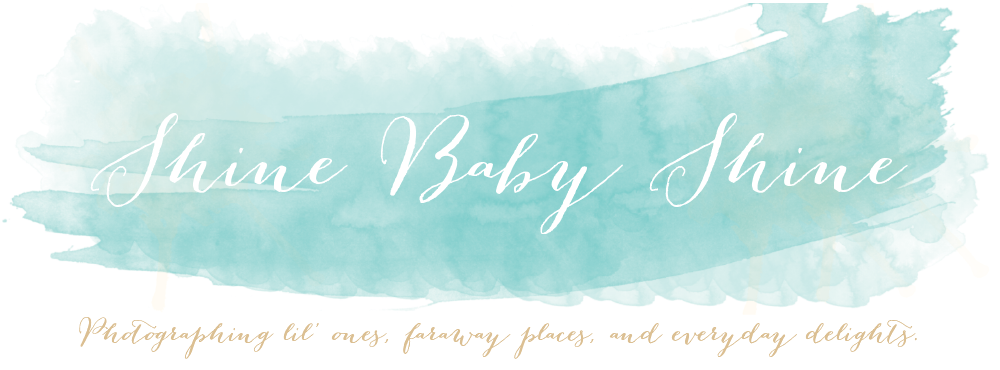One thing that I've learned about my DSLR camera is that shooting on Auto mode means that my camera is guessing on the
correct exposure. Mind you, it is an educated guess based on a predetermined
formula that sometimes works well and produces balanced images. But it isn't always right for the picture I want to take. There are certain situations in particular where a camera is
fooled on Auto mode and taking control can make a big difference. Take the
following sets of pictures as an example:
The photo on the left below was taken in Auto mode, while the one
on the right was taken in Aperture Priority with an additional 2/3 in Exposure
Compensation (click
here for a good explanation
of Exposure Compensation). In scenes like the one below - that
are bright or have a lot of white - the camera can be tricked in Auto mode to
underexpose the subject (in this case leaving Maelle's face too dark). To
compensate for this, I increased the ISO to let in more light, decreased the
aperture (to make the lens opening larger) and increased the Exposure
Compensation. In the resulting image, the side of the blanket is slightly
overexposed but I figured it was a worthwhile trade off to get a well exposed
face.
 |
| LEFT ISO: 200, Aperture f/4.5 SS 1/250 RIGHT ISO: 400, Aperture f/3.5, SS 1/500, +2/3 EV |
Again for the photos below, the photo on the left was taken in
Auto mode while the one on the right was taken in Aperture Priority mode. In the
Auto photo, the flash made Maelle's face look a bit flat and overly white and also changed the colour of the front of the couch. When I shot the
photo on the right, I switched off the flash and lowered the aperture to let in
more light, which also had the positive effect of decreasing the depth of field
to focus on Maelle and leave the back of the couch/scene blurred. Because I was
using a shallow depth of field (i.e. a low aperture number), I made sure to
select my focal point on Maelle's eyes.
 |
| LEFT ISO 400, Aperture f/4.0, SS 1/60 RIGHT ISO 400, Aperture f/2.2, SS 1/160 |
Here are some tips I've found helpful:
1) Expect to fail
Once I started to move outside of Auto mode, I was often frustrated
that sometimes the pictures were worse. I had to remind myself that
although my ratio of hits to misses might be low at
the beginning, it would change over time.
2) Try taking one
photo in Auto first, review, then change it up
If I'm faced with a difficult shooting situation, one thing I've
found helpful is to use Auto as a starting point. Take the first photo of your
subject in Auto and see what the camera does. Review the shutter speed, ISO and
aperture the camera has chosen and see what you think is working and what
isn't. Experiment with different settings.
3) Start small
It can be hard to remember to change all the settings at once, so
try mastering one setting at a time. Take pictures in Program mode (where the
camera still chooses the Aperture and Shutter speed), but experiment with
changing White Balance or ISO. Then move onto adjusting the Exposure Compensation
if the photo is too dark or too light. Or try taking pictures in Aperture
Priority and let the camera worry about shutter speed. Sure, your end goal may
be to be comfortable in Manual but you don't need to get there all at the beginning.
Finally, if you're looking for a great book to help you
move beyond "point and shoot" I'd highly recommend Beyond
Auto Mode.

Yes. I use two stops up on white for snow shots, mostly. Learned this the hard way shooting at White Sands in New Mexico. You are really on a good learning curve here. Really nice definition in both second shots.
ReplyDeleteHigh ISO is great for action, but you get some grainy effects at the really high numbers ... on my camera, anyway. I will often do three or four shots at different Numbers.
Loving the blog and all you are posting. I have a half written one of how I learned. 45 years ago. Good grief!
Mary, I also struggle with the noise problem with a high ISO. My camera seems to be okay at ISO 800, but ISO 1600 (the camera's maximum) is too noisy for me. My challenge (which I am still working through) is that I am often photographing indoors where there isn't a lot of light, so I am increasing ISO to compensate for this. Thanks for reading!
ReplyDelete